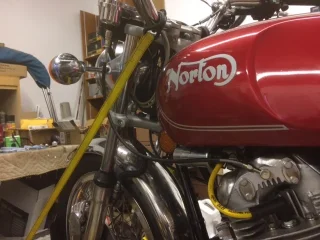pete.v said:
Being that the left side head inherently is at the end of the pressure, would the drilling of the intake rocker spindles, eliminating the cross over line, be a more direct and more efficient route for oil to feed the drive side head? Or is aesthetics a persuading factor for this procedure? Or is it a non issue being that we are not talking of flow, but pressure?
pete.v
I really can't answer for anyone else but my self. I went with the drilled rockers because the engine was apart for a rebuild. The SS cross over was always a pain to run and not come in close contact with something, so I chose to eliminate it. I installed the gauge to check for oil pressure on start up after the rebuild, I figured it would be cheap insurance. I could see the oil flow in the oil tank, and also see oil pressure at the head. As far as oil flow, I'm not a fluids engineer but my thinking is the size of the oil line from the pump to the head will dictate volume whether the oil flows through a crossover or a drilled rocker.
Most importantly there is the Comstock factor. Jim did a beautiful job on my head and if drilled rockers work for him, it's fine by me too. Thanks Jim !
This is the only engine I have rebuilt since I was 24 yrs old and built a 860 Trident. I depended on this forum and especially Comnoz for input. My knowledge and experience is limited so I depend on the experts.
Pete

